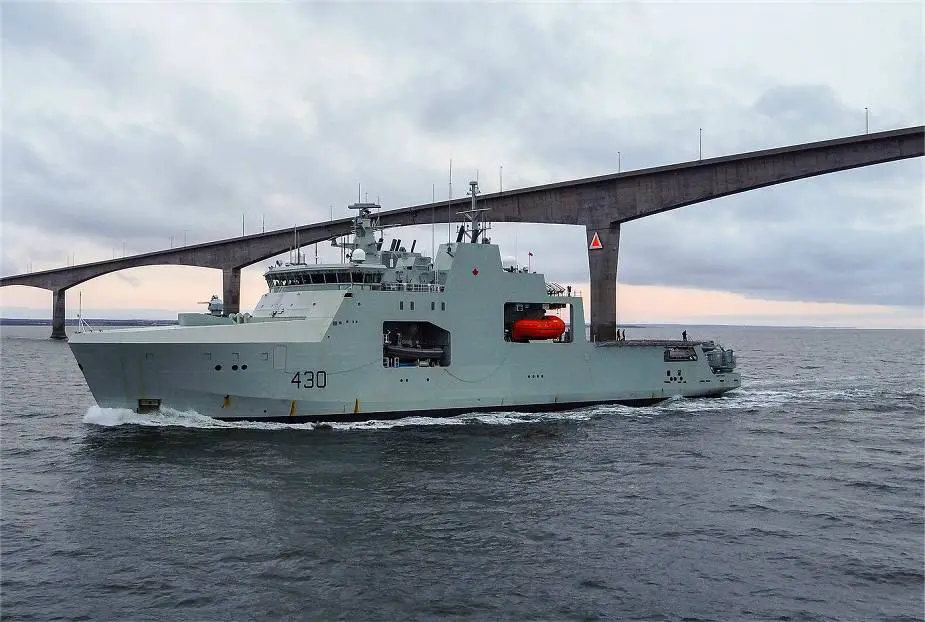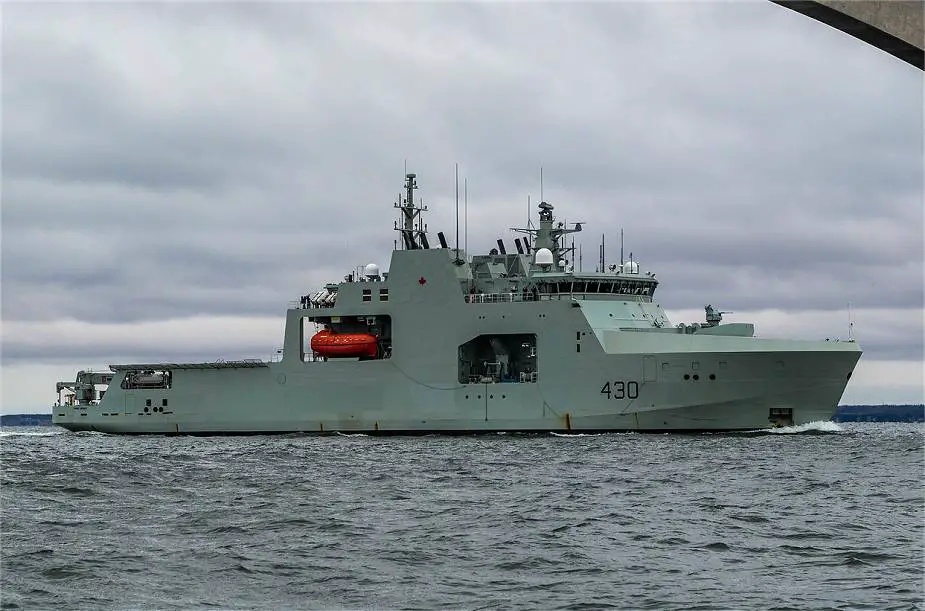Breaking news
HMCS Harry DeWolf offshore patrol vessel of Canadian Navy conducts new trials at sea.
According to a statement published by the Royal Canadian Navy on December 7, 2020, the crew of the HMCS Harry DeWolf offshore patrol vessel of the Canadian navy has conducted at sea new training, testing, and trials on the new vessel. The work is part of a normal process to incrementally test Harry DeWolf and its systems, and as sailors gain experience with this first-of-class ship, they’re also making an immediate impact on RCN business, explains the ship’s commanding officer.
Follow Navy Recognition on Google News at this link
 Canadian navy HMCS HARRY DEWOLF sails under the Confederation Bridge between Prince Edward Island and New Brunswick on November 25, 2020. (Picture source Canadian army combat camera)
Canadian navy HMCS HARRY DEWOLF sails under the Confederation Bridge between Prince Edward Island and New Brunswick on November 25, 2020. (Picture source Canadian army combat camera)
The HMCS Harry DeWolf offshore patrol vessel is designed for use in the Arctic regions of Canada for patrol and support within Canada's exclusive economic zone. The ship was ordered in 2011, laid down in 2016, and launched in 2018. The vessel completed the contractor’s sea trials in July 2020, was delivered to the RCN (Royal Canadian Navy) on 31 July 2020, and began post-acceptance sea trials.
While trials will continue over the next 12 months, they will be taking place alongside naval operations, Cdr Gleason added. During the most recent proficiency sail to Newfoundland and Labrador, for example, the ship contributed to Canada’s maritime domain awareness while also gaining proficiency with the new platform.
Through the remainder of the fall and winter, Harry DeWolf will conduct both cold-weather and warm-weather trials as it continues building operational capability – the ship will work with Cyclone helicopters and PUMA unmanned aerial vehicles, trial its main 25mm automatic gun, and continue operating its small boats, among other tests. In the spring, the crew plans to conduct their first replenishment-at-sea, which will prove the ability to remain at sea for months at a time.
Increasing the RCN’s capabilities in the North is one of the key features of the Harry DeWolf Class, and HMCS Harry DeWolf and its sister ships will be at the core of an enhanced Canadian Arctic presence over the coming years. The thick-hulled ships can sail in up to 120 cm of first-year sea ice, and come with ample space for helicopters, small vehicles and cargo containers, which are particularly useful when operating in remote regions. The ships will also be available to support other government agencies like the Canadian Coast Guard.
In addition to Northern missions, the class will also operate offshore and internationally, complementing the capabilities of other current and future RCN warships – they will be capable of conducting anti-smuggling and piracy operations, contributing to international security and stability, and are also equipped to respond to humanitarian, emergency response and disaster relief situations, both at home and abroad.
With its list of impressive modern operational capabilities, HMCS Harry DeWolf and the rest of the class are designed to meet the needs of a modern Navy and benefit the well-being of sailors, with individual crew accommodations, gender-inclusive washrooms, and flexible common spaces that allow for quiet and privacy to observe various religious or cultural practices.

The HMCS Harry DeWolf has an overall length of 103.6 m, a beam of 19.0 m and a displacement of 6,615 tons. The ship has an enclosed foredeck that protects machinery and workspaces from Arctic climates. The vessel is powered by a diesel-electric system composed of four 3.6-megawatt (4,800 hp) generators and two diesel engines rated at 4.5 megawatts (6,000 hp) driving two shafts.
The Harry DeWolf is capable of 17 knots (31 km/h; 20 mph) in open water and 3 knots (5.6 km/h; 3.5 mph) while icebreaking in new year ice of 1-meter (3 ft 3 in) thickness. The ship is also equipped with a bow thruster to aid during maneuvers and docking procedures without requiring tugboat assistance. The ship has a range of 6,800 nautical miles (12,600 km; 7,800 mi) and an endurance of 85 days. She is equipped with fin stabilizers to decrease roll in open water but can be retracted during icebreaking.
The Harry DeWolf is armed with one BAE Mk 38 25 mm (0.98 in) gun and two M2 Browning machine guns. The patrol ship has an onboard hangar and flight deck for helicopters up to the size of a Sikorsky CH-148 Cyclone. She has a crew of 65 sailors and can accommodate up to 85 people.





























